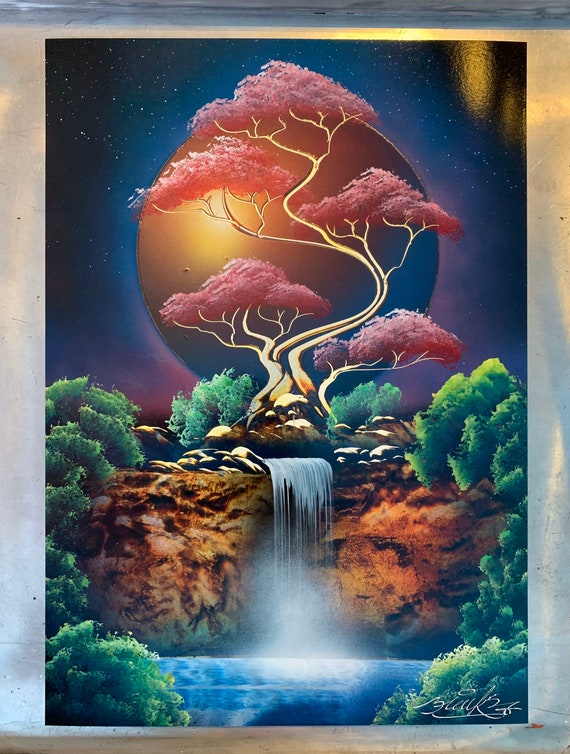Unveiling the Magic of Paint
"A picture is worth a thousand words." (That's true, right?) Art speaks a language everyone understands. Painting, specifically, lets feelings dance onto canvas, colors whisper stories.
The Brushstrokes of My Journey
I've always loved looking at art. Seeing a vibrant landscape or a portrait full of emotion makes me feel something. I remember the first time I saw Van Gogh's Starry Night, the way the swirling brushstrokes seemed to capture the very essence of a starry night. (It blew my mind). This experience planted a seed of wonder about how colors could create emotions. Today, I want to explore that question through painting itself.
Why Paint?
- Expressing yourself.
- Telling a story.
- Capturing a moment.
What Paints Do
Imagine your favorite colors, those you associate with something you love.
Types of Paints
- Acrylic paints: Easy to use and dry fast.
- Oil paints: Vibrant, create incredible details (I have used both in some of my early work, they both have distinct advantages).
- Watercolor paints: Light, beautiful washes (love those effects.)
Choosing Your Paints:
What colors are your favorites, the colors that speak to your heart? How would you combine those to make new colors that you find inspiring or reflect a feeling?
Important Stuff
Brush quality matters! Cheap brushes get the job done, but the best brushes create the best painting. (Try various quality to see yourself what I mean.)
The Importance of Canvas/Paper/Wood
Size and material of your canvas / paper / wood surface will change your painting approach (do some experimentation with varied materials).
Colors Mean Something
Colors are not simply paint. Different hues create different emotions in people (do you agree?).
Painting Techniques

Source: pinimg.com
Simple Techniques:
- Blending: Mix different hues to create your own shades and tints. This allows for different nuances, adding subtle layers to your masterpiece!
- Layering: Build upon prior colors with layers of translucent/ opaque paints (that would create effects like texture or different layers).
- Imprinting: Let nature or items bring impressions into your art; Leaves or sand are interesting tools (for the kind of effect they bring).
- Gradients/Soft Transitions: Make smooth changes from one color to another using brush strokes or other tools (soft strokes).
A Little More Advanced Stuff (If you want to go beyond the basics):
- Impasto: Build layers and thick colors in a visible way to highlight texture, boldness. (It makes your piece pop.)
- Stippling: Creating patterns by using dots (is quite a fascinating way to express an image; this gives small pieces of an effect but great combination.)

Source: royalthaiart.com
Mixing Colours
Mixing colors (mixing them) opens up the world to more expressions; (it's fun!) What you use to blend those depends on the technique! Mixing your own colors offers incredible freedom, imagine that feeling.
Painting a Picture: A Process
- Brainstorm: Ideas (people, subjects). Sketching out different thoughts/ideas onto paper; make lots of notes or thoughts that would resonate well in the painting.
- Pick your palette: A few key colours create a mood. What do you want to express with your color choice. (Choosing colours in terms of your art). Your favourite hues/colours! Think about color combinations that convey emotions. (Blue = sadness? or serenity?.) (Red? = aggression? Or passionate love? You need to reflect upon those qualities and ideas.)
- Composition: Layout. Do you want an exciting/interesting start/center/ending, this also has a place. Plan for good flow; how do you draw the eye through your painting. Start to experiment by adding some different objects/scenes within your canvas; a background or character's details/clothes are key in creating this feel! (Place emphasis on where your character is standing or focused or standing). What aspects create interest, what brings depth, where do you place these (things?) Where the viewers focus/ attention goes, how do you emphasize that aspect in a particular painting; this plays a role. (Experiment!). Where to place these things within the image so the story (emotional impact). Make careful choice about things you put where/which order! It helps communicate things through visual choices (placement) and ideas.
Art Criticism (And How Others Look At Art)
- What do others see? (Use observation and note some reviews about this artwork or piece of work. Be mindful what other people share and talk about; it helps to create insight or an understanding or the creative process)
Some Great Artists and Their Styles
- Van Gogh: Bold and expressive use of colour (like what you read in other descriptions before!).
- Picasso: Unique style, pushing boundaries.
- Monet: Focus on light, capturing moods, great example of style choices and impact on expression/impact on emotion (focus, choice, effect).
- Frida Kahlo: Unique expression, her perspective. (It also reflects emotional stories).
My Opinion
I enjoyed experimenting with various color mixtures and painting techniques! Each painting is unique, reflects my personal experiences.

Source: ytimg.com
Their Inspirations (The Artists!)
Think about how they painted different ideas: Did their life experiences, emotions, surroundings or circumstances effect what they wanted to convey (feelings) within their paintings? It is amazing.
(How is inspiration in any art form, an experience or is it purely an art?)
Questions About Your Paintings
- What story does your painting tell?
- How do the colours contribute to the feeling you're trying to convey?
- What about painting attracts or fascinates you personally, what feelings (within your mind or heart) makes your creative output appear as is or become a picture; like that thing we imagine or draw or see; this artistic concept.

Source: etsystatic.com
A Final Thought
I still have so much to learn. Each new brushstroke, a chance for exploration; Every painting is different and special. And (maybe it means something). (In a broader perspective.) I love to hear opinions or hear stories of ideas for these kinds of works.
